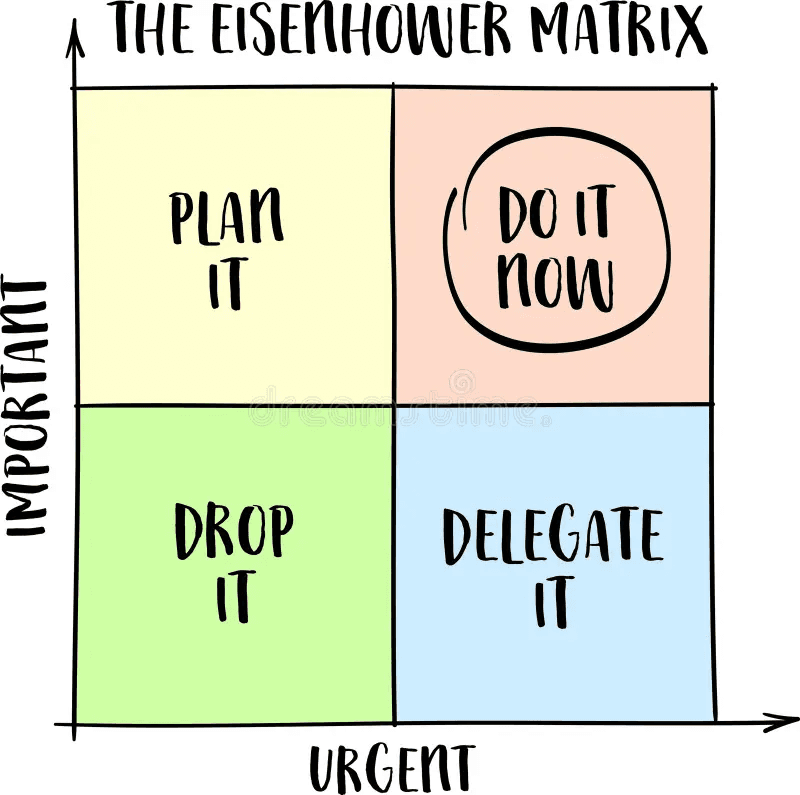Mastering Time Management: A Practical Guide to Balance and Productivity

Time management is one of the most valuable skills you can develop, and getting it right at uni will make life much easier later. It’s not just about getting more done; it’s about doing the right things at the right time while maintaining balance. This guide will help you master your schedule, prioritise effectively, and find time for productivity and rest.
1. Create “Must” Tasks and Schedule Them
Each day or week, identify your “must” tasks—these are the non-negotiable priorities that MUST be completed. Examples include deadlines for assignments, study sessions, or scheduled meetings. Once you’ve identified these, add them directly to your calendar or timetable.
Visualizing your tasks in a calendar helps you see where your time is going and prevents you from overcommitting. Tools like Google Calendar, Notion, or a physical planner can be incredibly helpful. Treat these slots as sacred. What’s in your calendar is your commitment to yourself.
Pro Tip: Break larger tasks into smaller, actionable steps. For example, instead of blocking 4 hours for “finish essay,” try breaking it into smaller chunks: “research,” “write draft,” and “edit.”
2. Prioritize with the Quadrant Method
Not all tasks are created equal. Use the Eisenhower Matrix, the quadrant method, to decide what to focus on. This simple framework categorises tasks by urgency and importance, allowing you to tackle what truly matters.
Here’s how it works:
The Four Quadrants (see above for image):
• Quadrant 1 (Important & Urgent): Tasks that need immediate attention, like meeting deadlines or solving a pressing issue.
• Quadrant 2 (Important, Not Urgent): Tasks that contribute to long-term goals, like studying for an exam or planning a project.
• Quadrant 3 (Not Important, Urgent): Tasks that can be delegated or minimized, like responding to non-critical messages.
• Quadrant 4 (Not Important, Not Urgent): Low-value tasks, like excessive social media scrolling, that should be avoided or eliminated.
Spend most of your time in Quadrants 1 and 2, where the high-impact work happens. By scheduling Quadrant 2 tasks early, you can prevent them from escalating into urgent crises.
3. Be Flexible: Create a Dynamic System
Life happens, and even the best plans can go off track. That’s why your time management system should be flexible. Build some breathing room into your schedule for unexpected changes. For instance, if an emergency occurs or a task takes longer, shift lower-priority tasks to another day or time.
A great way to implement this is to leave open blocks of time in your calendar. Use these as buffers to catch up on tasks or deal with surprises without derailing your day. Alternatively, know which colour tasks in your calendar can be shifted with minimal impact. There needs to be accountability and a limit to how many times a task can be shifted so as not to cause tasks to pile up.
Pro Tip: Color-code your calendar to differentiate between fixed commitments (classes, meetings) and flexible tasks (study time, exercise). This helps you quickly identify what can be shifted if needed. I also have different shades of the same colour to assess the urgency of each activity.
4. Schedule Protected Rest Times
Rest is as important as work. Without it, your productivity will eventually decline, and you’ll risk burnout. That’s why you need to schedule dedicated rest periods into your day. This could be a lunch break, a 30-minute walk, or an evening where you completely unplug.
Protected rest isn’t just about physical recovery but also mental recuperation. Use this time to recharge, reflect, or relax. You’ll return to your tasks with more focus and energy.
Pro Tip: Treat rest as non-negotiable, just like any other task in your calendar. It’s not wasted time; it’s an investment in your well-being.
5. Allow Time for Miscellaneous Activities
Sometimes, little things—answering emails, filing paperwork, tidying your workspace—pile up and become overwhelming. To avoid this, allocate time for “miscellaneous” tasks.
For example, set aside 30 minutes daily to check emails, update your to-do list, or handle small admin tasks. These blocks keep minor tasks under control and prevent them from disrupting your focus on bigger priorities.
Pro Tip: Batch similar tasks together. For instance, handle all your emails in one go instead of checking them throughout the day. This minimizes distractions and keeps you on track.
Final Thoughts: Balance is the Key
Effective time management isn’t about squeezing as much as possible into your day—it’s about working smarter, not harder. You'll find the balance between productivity and well-being by prioritizing tasks, scheduling rest, and building a dynamic, flexible system.
Remember, the goal isn’t perfection—it’s progress. Small, consistent improvements to your routine can make a huge difference. With these strategies, you’ll get more done and feel more in control of your time and energy.
